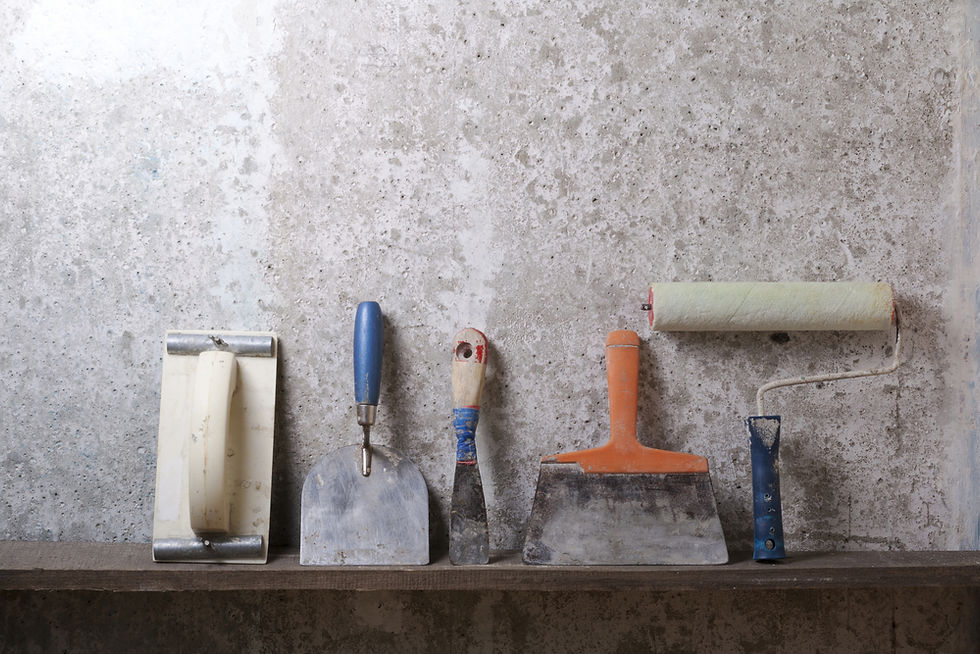Proven Methods to Maintain Hand Tools Longevity
- Anna Wrench
- Oct 8
- 4 min read
Hand tools are the backbone of any trade, workshop or DIY project. Whether you are a professional craftsman or a weekend, investing in quality hand tools is only half the work that maintains them properly to ensure that they last for several years. Rust, wear and abuse can shorten the life of a unit, but with proper care and maintenance practices you can keep the hand tools in the top position for decades.
This guide examines the most effective methods to expand the life of your hand tools and perform them as new.
Keep Your Tools Clean After Every Use
The easiest thing is to clean your devices after each use one of the most effective habits. Dirt, dust and fat can cause fast wear and rust if it is not uncontrolled.
Wipe metal surfaces using a clean, dried fabric after use.
For devices that meet moisture or chemicals, use a dry cloth to remove residue.
As long as necessary - light soap and water usually avoid using sufficient solvents.
For stubborn dirt or rust stains, gently scrub with a steel brush or fine quality wool. Pure equipment is not only easy to handle but also prevents damage from build -ups that can cause rust or corrosion.

Prevent Rust with Proper Lubrication
Jung hand tools are the first enemy, especially of steel equipment. Using a light coat of oil on the metal parts of your devices helps them with moisture and oxidation.
You can use products like:
WD-40, 3-in-1 oil or mineral oil for general safety.
Flaxseed oil to protect the wood handle from fracture and drying.
Just apply a few drops of oil on a soft cloth and rub it on the metal surfaces. This thin film acts as an obstacle to Jung and keeps running parts smooth and functional.
Store Tools in a Dry, Organized Space
Proper storage is necessary to maintain the life of the equipment. Moisture is an important cause of rust, so make sure your storage area is dry and well ventilated.
Some practical storage options include:
Toolbox or chest with room for simple outfits.
Rack or pegboard that climbs on the wall for frequently used devices.
Silic gel pack or moisture that absorbs the equipment to prevent moisture production.
Avoid storage devices directly on concrete floors or moist surfaces, as they can pull moisture from the ground and accelerate rust.
Sharpen and Maintain Edges Regularly
Tools such as chisel, knife and flight blades must be accelerated regularly to stay effective. A dull leaf not only reduces efficiency, but also increases the risk of accidents, as it requires more power to bite.
Use a sharp stone, file or respect to maintain sharp edge.
Constant intensification - it is easy to touch one edge, which is neglected.
Always wear gloves and follow the manufacturer's safety instructions when handling equipment quickly.
Keeping the blade sharply improves accuracy and expands both the tool and the safety of the user.
Inspect Tools for Damage
Frequent inspections can help detect initial signs of wear or damage before it becomes severe. Look for:
Cracked handles
Loose joints
Rust spots or pitting
Dull or bent edges
If you get damage, you can repair it immediately. On the use of wooden handles, apply flaxseed oil to prevent coarse area with sand and splinters. Change the handle or divide if necessary. Ignore small problems can cause equipment failure and potential damage.
Use Tools for Their Intended Purpose
Misusing tools is one of the most common causes of premature wear. Permanent damage can cause permanent damage to the screwdriver like a chisel or as a hammer. Each hand tool is designed for a specific purpose - its incorrect use can not only break it but also cause security risk.
Always choose the right tool for task. If you do not have accurate, it is better to borrow or invest in it instead of the risk of damaging your current set.

Protect Wooden Handles and Grips
The wooden handles on hammers, axes and chisels require care for cracks and divisions. Over time, the wood can be weak when exposed to moisture and ups and down temperature.
To maintain wooden handles:
Apply boiled flax oil with a few months.
Store them away from excessive heat or moisture.
Sand easy to remove rough patch.
For rubber or plastic grip, clean them with light detergents and avoid leaving them in the sun for a long time.
Organize and Label Your Tools
Keeping your equipment organized not only saves time but also helps prevent damage or damage. Use a dedicated toolbox or a wall -mounted pegboard for easy access.
When each tool has a specific place, you have less chances to leave or wrong and it is still better preserved. Regares the equipment to the site regularly after use - this is a small habit that leads far to maintaining its position.
Regular Maintenance Schedule
Enter a regular maintenance plan based on how often you use your tool. For professionals, it may be necessary to use weekly cleaning and monthly oil. For random users, a very quarterly maintenance session should be sufficient.
During maintenance:
Clean and oil metal parts
Sharpen edges
tighten loose screws or joints
Replace damaged components
Consistency is important to secure your devices in life.
Conclusion
Maintaining your hand tools doesn’t require much effort, but it requires regular attention. Cleaning, lubrication, sharpening and storage of them properly can increase the life and performance.
By following these proven methods, you not only protect your investments, but also ensure safe and more efficient work. The HUSE well maintained device is not just a piece of tools; It is a reliable partner to help you achieve professional results every time.




Comments